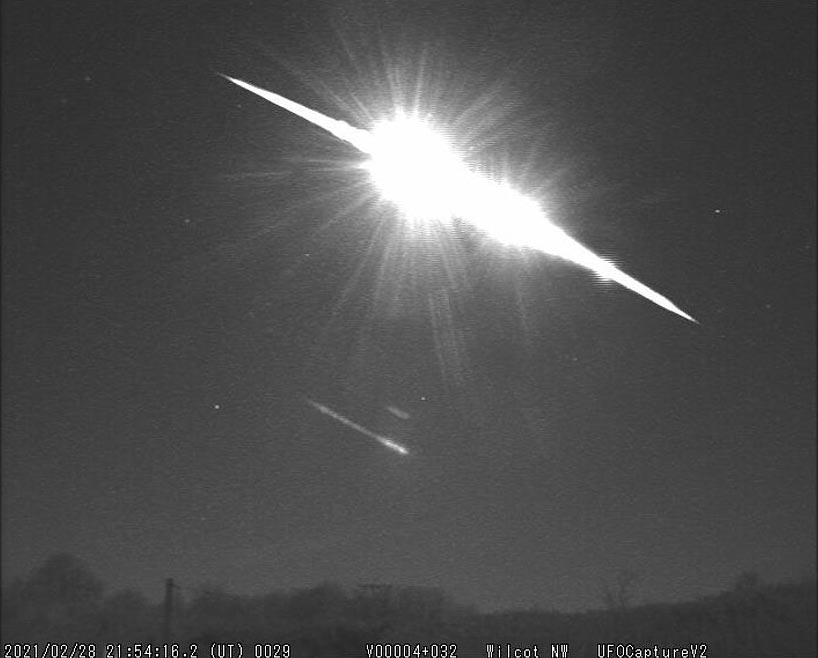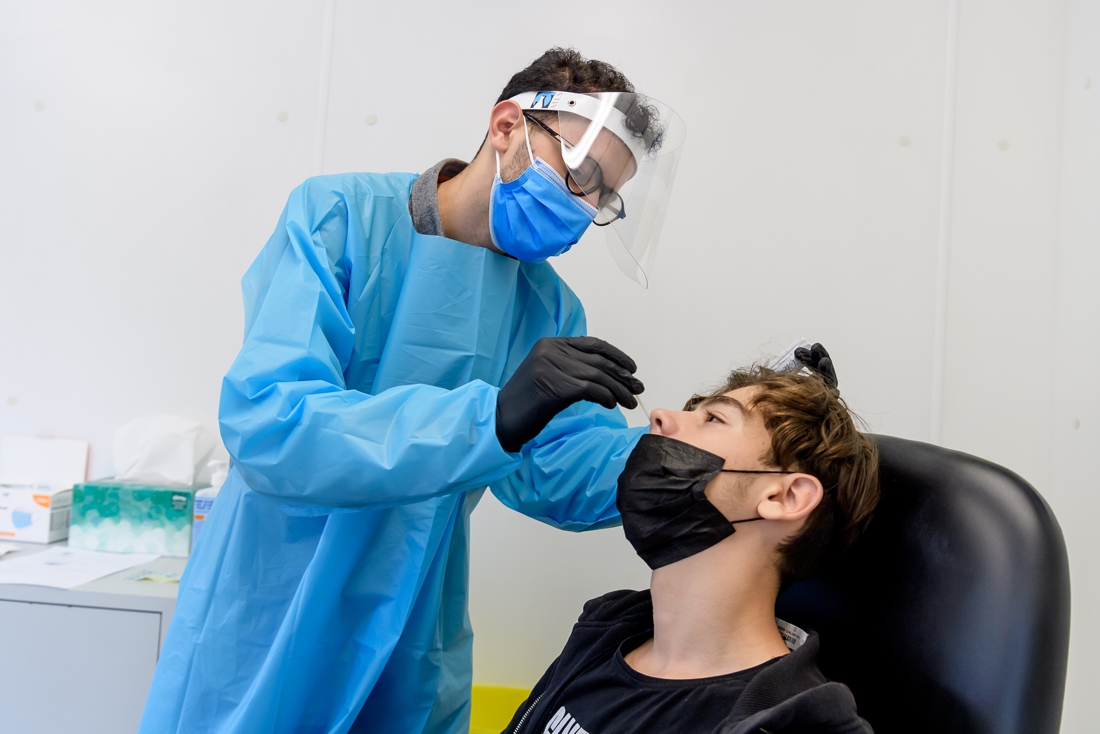Photo of a fireball on 28 February 2021. Credit: UK Meteor Observation Network
–
Scientists are gearing up to unlock the secrets of rare meteorites and the possible origins of the oceans and life on Earth, thanks to funding from the Science and Technology Facility Council (STFC).
Research on the meteorite, which crashed in Britain earlier this year, suggests that the space rock originated in the early solar system, 4.5 billion years ago.
The meteorite is now officially classified, thanks in part to a STFC-funded specimen study.
The Winchcombe meteorite, aptly named after the Gloucestershire town where it landed, is an extremely rare species called carbonaceous chondrite. It is a rocky meteorite that is rich in water and organic matter, and has maintained its chemical properties since the formation of the solar system. Preliminary analysis showing that Winchcombe was a member of the CM (“Mighei-like”) group of carbonaceous chondrites has been officially approved by the Meteoritical Society.
STFC has provided an emergency grant to help fund the work of planetary scientists in the UK. Funding has enabled the Natural History Museum to invest in state-of-the-art processing facilities for the preservation of meteorites and has supported time-sensitive mineral and organic analysis in specialist laboratories at many of the UK’s leading institutions.
Fragment image of the Winchcombe meteorite. Credit: Natural History Curator
–
Dr Ashley King, Fellow for Future Leaders at UKRI in the Department of Geoscience at the Natural History Museum, said: “We are grateful for the funding provided by STFC. Winchcombe is the first falling meteorite to be discovered in the UK in 30 years and the first carbon chondrite to be discovered in our country. STFC funding is helping us with this unique opportunity to discover the origins of water and life on Earth. With these funds, we are able to invest in state-of-the-art equipment that contributes to our analysis and research of the Winchcombe meteorite.”
Meteors are tracked using images and video footage from the UK Fireball Alliance (UKFAll), a collaboration of the UK meteor camera network that includes the UK Fireball Network, which is funded by STFC. The pieces were then quickly found and recovered. Since that discovery, British scientists have studied Winchcombe to understand mineralogy and chemistry to study how the solar system formed.
Dr Luke Daley from the University of Glasgow and co-chair of the UK Fireball Network said: “Being able to investigate Winchcombe is a dream come true. Many of us have spent our entire careers studying this rare type of meteorite. We also participated in JAXA’s Hayabusa2 mission, and NASA’s OSIRIS-REx, which aim to return primitive samples of carbon asteroids to Earth. The fall of the carbonaceous chondrite meteorite in England, to be recovered so quickly and to have a known orbit, is a truly special event. and a great opportunity for the planetary science community in the United Kingdom”.
Funding from the STFC has allowed scientists to immediately begin looking for signs of water and organic matter at Winchcombe before they become contaminated with the terrestrial environment.
Dr Queenie Chan from Royal Holloway in London added: “The team’s initial analysis confirms that Winchcombe contains a variety of organic ingredients! Studying meteorites just weeks after they fell, before major soil contamination occurred, means we are really looking back inside. meteorite time. Materials existed at the birth of the solar system, and we learn how they came together to make planets like Earth.”
A piece of the Winchcombe meteorite discovered during research organized by the British Planetary Science Society is now on display at the Natural History Museum in London.
–


